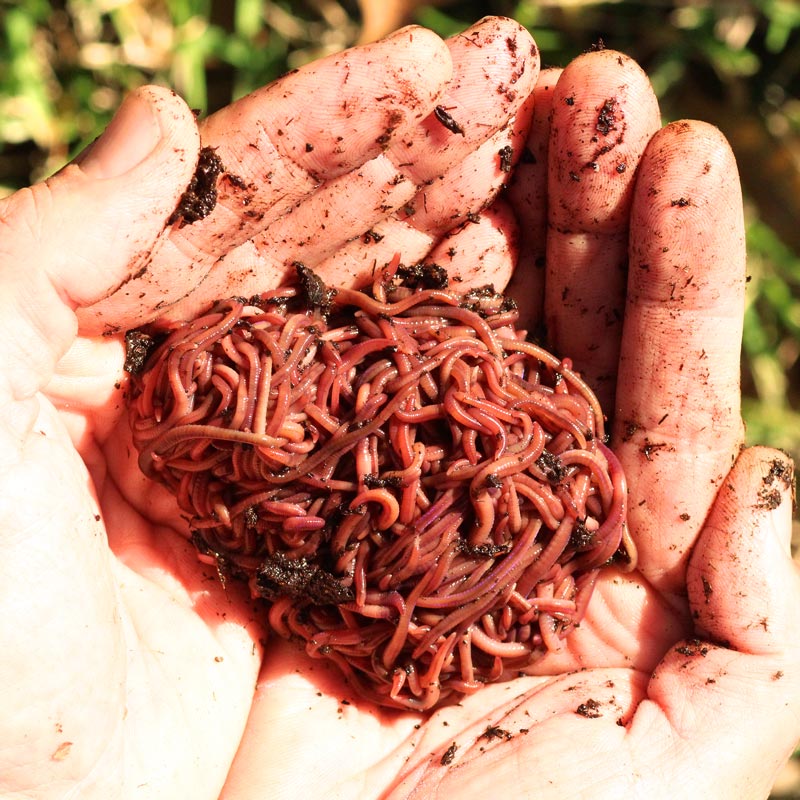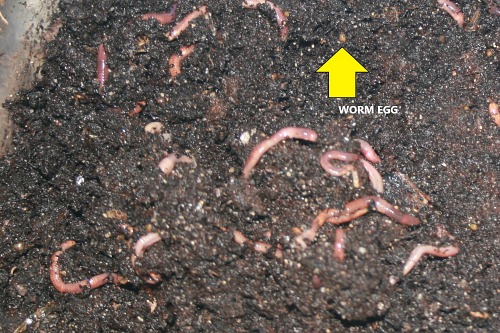Red Wiggler Express: Efficient and Trusted Worm Delivery Services
Red Wiggler Express: Efficient and Trusted Worm Delivery Services
Blog Article
Unlock the Secrets of Red Wigglers: Your Overview to Composting Success
The assimilation of red wigglers right into composting methods presents a significant possibility for boosting dirt health and advertising sustainability. Understanding their requirements and habits is important for enhancing their potential, from establishing up an appropriate worm bin to feeding them the appropriate materials.

What Are Red Wigglers?
(Red Wiggler Express)Red wigglers, medically understood as Eisenia fetida, are a types of earthworm mostly made use of in composting as a result of their impressive capacity to decompose raw material effectively. These worms are defined by their reddish-brown coloration and a segmented body, generally gauging in between 3 to 4 inches in length. Unlike other earthworm species, red wigglers grow in rich, organic settings, making them perfect for vermicomposting systems.
Belonging To The United States And copyright, they are commonly discovered in rotting leaves and garden compost piles, where they play an important duty in nutrient recycling. Their adjustment to living in a wet, aerobic environment enables them to take in huge amounts of organic waste, breaking it down into nutrient-rich castings that boost dirt health and wellness.
Red wigglers recreate quickly, with a solitary worm efficient in generating numerous cocoons each week, each containing numerous hatchlings. This rapid recreation price contributes to their efficiency in composting operations. They favor temperature levels in between 60 ° F and 80 ° F, and their activity degree increases considerably within this range, more aiding in the decay process. Understanding the biology and actions of red wigglers is important for maximizing their potential in composting applications.
Advantages of Using Red Wigglers
Utilizing the power of red wigglers in composting uses numerous advantages that boost soil wellness and promote lasting waste administration. These remarkable microorganisms successfully damage down raw material, transforming cooking area scraps and yard waste into nutrient-rich vermicompost. This completed item is exceptionally helpful for plant development, as it improves dirt framework, increases moisture retention, and boosts vitamins and mineral schedule.

(Red Wiggler Express)Furthermore, the presence of red wigglers in your composting system can increase the composting process, creating high-grade garden compost in a portion of the moment compared to traditional approaches. The spreadings generated by these worms are additionally bristling with useful bacteria that additionally enrich the dirt community.
Establishing Your Worm Bin
Creating an efficient worm container is an uncomplicated process that can significantly boost your composting efforts. The initial step is choosing an ideal container. Worm bins can be made from plastic storage space containers, wood boxes, or readily offered worm bins. Make sure the container has sufficient drainage and air flow openings to keep optimum moisture degrees and air movement.
Next, prepare the bedding product, which serves as the worms' habitat. A mix of shredded newspaper, cardboard, and coconut coir works well, giving a comfortable environment for the worms.

Feeding Your Red Wigglers
To guarantee the wellness and performance of your red wigglers, it is necessary to offer them with a balanced diet that fulfills their nutritional needs. Red wigglers prosper on a varied variety of organic products, which not only provide essential nutrients yet additionally advertise effective composting.
Beginning by integrating kitchen area scraps such as vegetable peels, fruit cores, and coffee premises. Stay clear of citrus fruits, onions, and garlic, as these can be damaging to worm wellness. Furthermore, present shredded paper, cardboard, and completely dry leaves to create a well-aerated environment.
Feeding regularity need to be kept an eye on; typically, worms can eat half their body weight in food weekly. It is important to prevent overfeeding, as excess food can lead to unpleasant odors and bring in bugs. A good technique is to add food in percentages, allowing worms to refine it prior to introducing much more.
Keeping moisture degrees is additionally vital; the bed linen must perspire yet not soaked. Be sure to routinely examine the temperature level and pH levels of the container to guarantee an ideal setting for your red wigglers, eventually boosting their composting efficiency.
Harvesting and Making Use Of Garden Compost
An effective composting process with red wigglers culminates in the rich, dark garden compost referred to as vermicompost, which can substantially improve soil health and plant growth. Harvesting this nutrient-dense material usually happens every 3 to six months, depending on the dimension of your system and the amount of raw material being refined.
To collect, carefully different the compost from the worms and any type of undecomposed materials. One reliable method entails moving the contents of the container away and why not find out more adding fresh bed linens and food to the vacant space, encouraging the worms to move. After a few days, the compost can be gathered from the contrary side.
It is necessary to utilize vermicompost appropriately to maximize its benefits. It can be utilized as a leading dressing for garden beds, blended into potting soil, or made right into a nutrient-rich fluid fertilizer called "worm tea." This application approach aids to supply crucial nutrients directly to plant roots, promoting much healthier development. By incorporating vermicompost right into your horticulture routine, you not only recycle natural waste however additionally create a flourishing ecosystem that supports sustainable gardening methods.
Conclusion
In recap, red wigglers offer as phenomenal allies in composting initiatives, transforming natural waste right into nutrient-rich vermicompost (Red Wiggler Express). Their unique biological characteristics and effective waste handling capacities contribute significantly to sustainable horticulture methods. By comprehending the ideal problems for their habitat, feeding demands, and compost harvesting methods, gardeners can improve soil wellness and advertise plant vigor. Embracing vermicomposting not just minimizes landfill waste but additionally promotes a more eco accountable approach to horticulture and source management.
Report this page